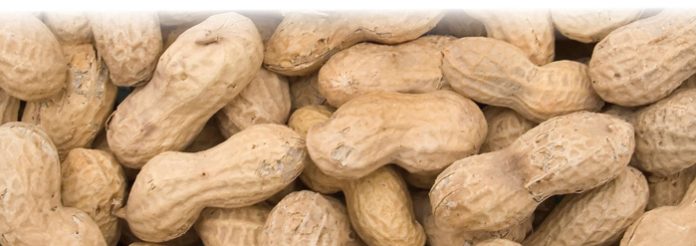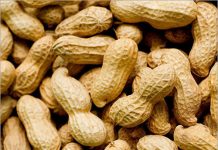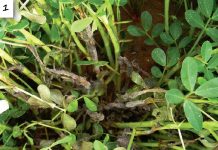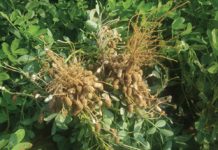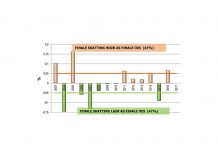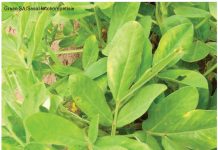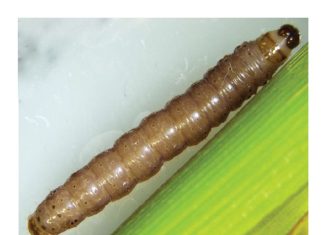February 2019
LOUREINE MULLER, groundnut agronomist, Triotrade Gauteng
For many a researcher and student that focus on the groundnut crop, the American Peanut Research and Education Society (APRES) has become the go-to congress where researchers and breeders from all over the globe gather to share information and advances in research.
It has become an annual pilgrimage, but for the representatives of GWK and Triotrade (Mr Pierre Ferreira and Ms Loureine Muller) this has been a once-in-a-lifetime experience. South Africa has not been represented at this meeting for quite some time and it was evident by the warm welcome that the country has been absent for too long.
The annual meeting was held over a period of four days in Williamsburg, Virginia in die United States (USA). There were presentations by many well-known researchers that specialise in different fields of study, but there were also presentations and posters made by students. This painted a picture of hope as there is an influx of new upcoming researchers and plant breeders that have shown keen interest in the fascinating crop called groundnut.
Being the 50th meeting of the society, a festive atmosphere was created by the incorporation of field trips to a working historical farm called Chippokes Plantation. During the early settlement of Virginia this farm was one of the first groundnut production farms. Historical groundnut implements that can be seen in the agricultural museum closely resemble current implements, as the workings of the machines were adapted to newer technology but are still based on the same principles.
The Peanut Foundation held a very informative pre-congress workshop. Topics such as marker assisted selection (MAS) for plant breeders, as well as the use of the newly mapped groundnut genome for use in groundnut breeding, were merely some that featured during the interesting discussions that were held during this workshop.
The curator of the Peanut Crop Germplasm Committee gave a very insightful report on their inventory status. They currently have 9 258 different cultivars and 558 wild Arachis species in their groundnut accession collection. The main aim of this collection is to have a large genetic pool for researchers and breeders to draw material from. This could be used for either breeding or research purposes.
Dr Shyamalrau Tallury explained the various methods of keeping this collection viable, either by germplasm regeneration or the maintaining of perennial hybrids planted in clay pots and kept in greenhouses. Other issues such as food security, the genetic base of crop production as well as the threat of genetic erosion, as explained by Dr Corley Holbrook, also came under discussion.
The overall impression after the pre-congress workshop was that USA programmes, such as germplasm upkeep, were all under financial pressure. Their budgets have been cut since 2008 and are currently at a low of $44 000 per year. The USA have various private groundnut breeders that fund their own programmes. Interestingly not all groundnut cultivars in the USA have high oleic content.
There are still areas that plant normal oleic Runner cultivars as well as small areas that produce Spanish type cultivars. The Spanish type cultivars are not true ‘Spanish types’, as they are hybrid Spanish/Runner types. There seems to be a strong move to return to older germplasm accessions to delve into the genetic possibilities as marker-assisted breeding starts to take shape.
It was mentioned that the groundnut crop of the USA is still 80% normal oleic cultivars. An interesting fact is that Georgia-06G is the most widely produced cultivar as the breeder has the financial means to market it. There are quite a few newly developed cultivars that outperform Georgia-06G, but they tend to fall in the shadow of its marketing strategy.
As the APRES Congress started to gain momentum, presentations on every aspect of groundnut production and breeding were presented to the attendees.
Subjects such as the future of groundnut agronomic research, the future of pest management, a retrospective look at engineering innovations in the groundnut industry as well as rethinking the scales of measuring groundnut quality, were high on the agenda.
During the concurrent breakout sessions that followed, one had to decide which presentations to go to. Between the two South African representatives a wide spectrum of presentations was attended. This facilitated broadening the scope of subjects covered as well as information gathering and networking.
Some of the presentations that stood out were the focus on finding nematode resistance as well as where America currently stands with their breeding programme. The main discussion around nematode resistance breeding was that they had to go back to basics as the resistance was merely a tolerance to nematode infestation.
The aspect of crop rotation was strongly brought back into the spotlight by Dr Tim Brenneman as a use for nematode control. Four diseases that seem to be high on the list of problems are tomato spotted wilt virus, white mould (Sclerotium rolfsii), Sclerotinia and leafspot.
Extension officers are the link between the producer and the breeder. Information dissemination as well as building a lasting relationship with the producer, came up as focus points. Agronomic production practices were also one of the topics that kept coming up in each discussion.
The overall agreement was that production practices were even more important than which cultivar was being produced. The focus is on profitability and sustainability for the producer, but also on the marketability of the product that is being produced.
Many friends were made and new information gathered during the attendance of the 50th APRES Congress. Within the world-wide groundnut industry many problems are the same with a little variation here and there. One thing that South Africa can be proud of is the fact that the quality of our groundnuts still stand out above all the rest.
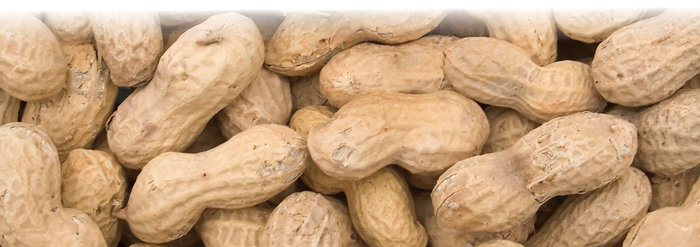
Publication: February 2019
Section: Mini-Focus on groundnuts



